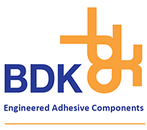Did you know that there are over 3,000 different wound dressings? Designed to be applied to wounds to promote healing and provide protection, they each have unique qualities so they can be suitable for specific wounds. But, which dressings for which wounds?
Even though the primary function of all wound dressings and advanced wound care is to provide a moist environment for wound healing, each type has its own purpose and benefits. Let’s take a look at which dressings work best for which wounds.
Wound-by-Wound Guide to Dressings
Superficial Wounds
Best dressings for superficial wounds: Gauze Dressings, Transparent Film Dressings
Also known as simple or soft tissue wounds, superficial wounds refer to abrasions or lacerations where “the injury is confined to the skin, subcutaneous tissue and fascia, and muscle damage is not extensive”.
Gauze dressings are one of the best options for superficial wounds. They are made from woven or non-woven cotton or synthetic fibres and are available in many different shapes and sizes. Mainly utilised for covering and protecting the wound, they can be used either on their own or together with other dressings for enhanced absorption.
Transparent film dressings are also another option for superficial wounds. They are made from thin, transparent and waterproof materials and are breathable yet permeable to bacteria. This means the wound is kept clean and dry, and the transparency enables medical professionals to monitor the healing to avoid infections.
Burn Wounds
Best dressings for burn wounds: Non-adherent Dressing, Hydrogel Dressings
Burn wounds are primarily caused by heat and are normally classified as first-, second-, or third-degree depending on the severity of the skin surface penetration. They require specialised dressings that provide cooling and pain relief.
Due to the fragility of the tissue, non-adherent dressings are commonly used for burn wounds as they have been designed to minimise trauma, pain and further damage when conducting regular dressing changes. As they are made from silicone or low-adherent fabrics, they won’t stick to the wound or the surrounding skin.
For second-degree burns, hydrogel dressings are ideal as they are made from water or glycerin and therefore create a moist wound environment to promote healing. This helps to prevent desiccation, promote autolysis and reduce wound pain, ultimately maximising patient comfort.
Various Ulcers
Best dressings for various ulcers: Foam Island & Hydrocolloid Dressings
Resulting from sustained pressure, pressure ulcers normally appear over a bony prominence and are localised to the skin and underlying tissue. Diabetic foot ulcers are commonly located at the bottom of the foot and are open sores. Venous ulcers are also open sores that usually develop on the inside of the leg, above the ankle.
Foam island and hydrocolloid dressings are mainly used for Venous leg ulcer wounds. Foam island and hydrocolloid dressings are made up of impermeable pads coated with polysaccharides and other polymers. They prevent infections, reduce the pressure and keep the area moist to reduce pain and promote wound healing. They are flexible to fit around the different ulcer areas which makes them comfortable to wear and long-lasting.
Traumatic Wounds
Best dressing for traumatic wounds: Foam Dressings, Alginate Dressings
Traumatic wounds have advanced severity compared to superficial wounds, so they refer to cuts, lacerations or punctures that have caused damage to both the skin and the muscle tissue.
Made from either polyurethane foam or a film coated gel, foam dressings are soft and cushion the wound alongside absorbing wound exudate. They are comfortable enough for regular dressing changes without risk of damaging the skin further and are available in many different shapes and sizes to fit varying traumatic wounds.
Alginate dressings are another option for traumatic wounds as they offer high amounts of drainage. This is because they are made from natural products and, when in contact with a wound, they create a gel-like substance that helps to heal the wound and with tissue regeneration.
How to Choose the Right Wound Dressing
Choosing the right wound dressing ultimately means assessing the wounds and identifying what type of wound it is. Then, looking at the surrounding tissue, the edges of the wound and how much drainage there is. All of these factors can help you determine the best wound dressing to promote healing and comfort.
At BDK, we provide products that are compatible with the way skin moves, sweats, breathes, stretches and heals, etc. We have experience creating many advanced woundcare products like the ones above and many more, such as medicated dressings and antimicrobial dressings.
Contact us for further information on our manufacture of wound dressings.
